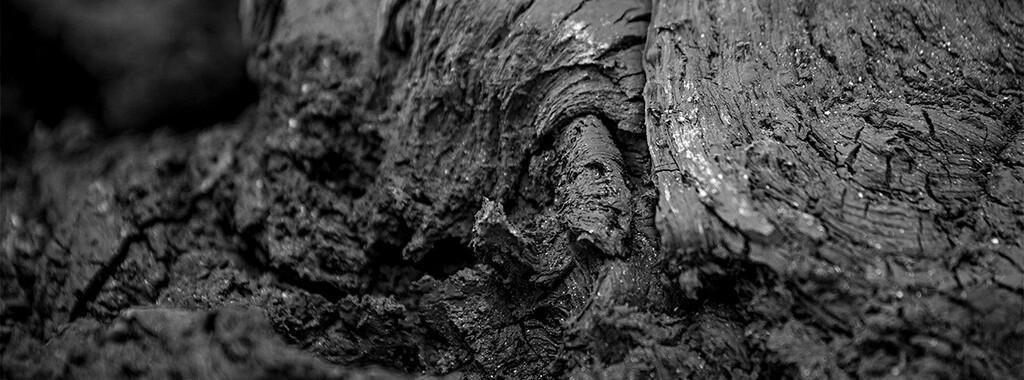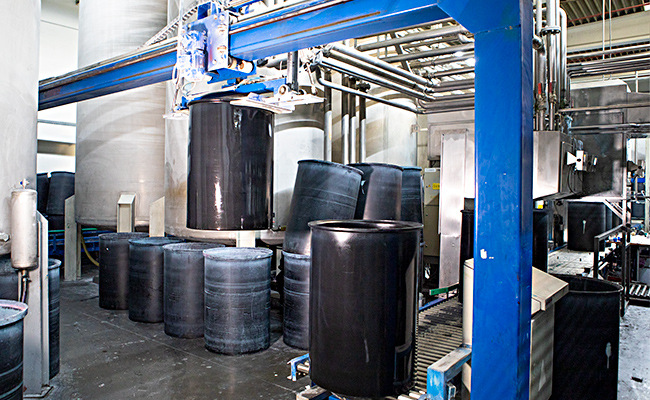Onsite treatment facility for recycling solvent and PVC at Sioen coating plants

Recycling our solvent and PVC waste
At our Ardooie and Saint-Frères Direct coating sites, we apply a PVC coating to our technical textiles. To reduce our waste, we recycle the PVC waste and the solvent we use to clean the tubs. Thanks to this adaptation, we produce more sustainably. We manage to use less raw materials and to produce less waste.
A swift colour switch
We apply PVC to technical textiles at our Ardooie and Saint-Frères direct coating sites. We produce more than 3000 colour variations. One of our assets is that we can switch from one colour to another very flexibly and fast. Changing colours, however, means that various elements of the machine need to be rinsed in order to remove the old colour and to produce the next batch in the correct colour.
The pumps are rinsed with a solvent that dissolves PVC. We aim to use the least raw materials possible and to recycle as many materials as possible. That’s why we wanted to find a sustainable alternative to reduce PVC waste and to use less new solvent.
PVC and solvent waste reduction
Rather than having a waste processing company incinerate our solvent/PVC mix, we choose to upgrade it to new raw materials. The used solvent we use to clean our tubs, is recycled and reused in our own production process. The PVC is extracted from the mix and is sold to another company and reused as a raw material by third parties to make garden furniture and floor mats, among others.
Sioen has its own waste treatment facility that is used to separate the PVC from the solvent. This facility consists of a multiple-step installation where the solvent is separated from the PVC, and is regenerated in its pure form, ready to be used for cleaning. The residual PVC is then afterwards dried and transformed into a market conformal residue ready to be used.
Recently, further optimisations have been done in order to reduce the energy impact of this recycling scheme.
Our step-by-step production process
First, as we have mentioned before, the machines need cleaning in between two different colours. The pumps that we use, are cleaned with solvent that we collect afterwards. Both the PVC waste and the used solvent are recycled later on in the process.

Once the container is full of PVC/ solvent leftovers, it is pumped into our recycling installation. The emptied tubs then go to the cleaning machine. They are first cleaned with used solvent, which is solvent that has been contaminated with PVC before. The second step is cleaning with ‘clean’ solvent that we will recycle ourselves in a later stage.

Once the tubs are cleaned, they are reused. The used solvent is then pumped into the recycling unit and the PVC extraction is started. The ‘clean’ solvent can then either be stored or we immediately use it in our cleaning cycle.

After recycling, pure PVC lumps are recovered. Those PVC lumps are a valuable raw material being reused as a raw material.

A positive effect
Thanks to the previously mentioned process, the PVC/solvent mixture we collect after cleaning the machines does not have to be incinerated by a waste processing company.
- This saves about 1500 tonnes of waste a year.
The used PVC is recycled and upgraded to raw materials.
- This saves about 300 tonnes of waste a year.
The recycled solvent is recycled and reused as a cleaning agent in our own machines.
- This saves about 1200 tonnes of waste a year.
SDGs
The cleaning cycle that is part of the production process at our direct coating plants recycles both PVC waste and solvent. This action helps realising SDGs 9, ‘build resilient infrastructure, promote inclusive and sustainable industrialisation and foster innovation’ and 12 ‘ensure sustainable consumption and production patterns’.
As included in target 9.5, we have upgraded our technological abilities and we have encouraged innovation. Further, our sustainable production process helps achieve targets 12.2 and 12.5. The former states that by 2030, we should ‘achieve the sustainable management and efficient use of resources’ and the latter says that by the same year, we should 'substantially reduce waste generation through prevention, reduction, recycling and reuse.’

